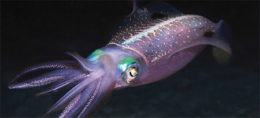Posts by 186325
Budinger to Receive 2018 IEEE Medal for Innovations in Healthcare Technology
Professor Emeritus and Founding Chair of Bioengineering, Dr. Thomas Budinger, will receive the 2018 Medal for Innovations in Healthcare Technology from the Institute of Electrical and Electronics Engineers. Professor Budinger is being honored for his “pioneering contributions to tomographic radiotracer imaging,” one of his many contributions to the field of medical imaging.
Read MoreConboy receives $5mil Open Philanthropy grant
The Open Philanthropy Project awarded a grant of $5 million over five years to support research on the basic biology of aging-related diseases and impairments, led by Dr. Irina Conboy.
Read MoreLee and Satish in 30 Under 30
2016 PhD Kunwoo Lee and 2011 MTM Siddarth Satish have been named to the 2018 Forbes 30 Under 30. Lee, a former student in Professor Niren Murthy’s lab and founder of startup GenEdit, developed a way to deliver muscular dystrophy-curing CRISPR edits to the body using nanoparticles. Satish is the founder and CEO of Gauss Surgical, a company that has developed technology to monitor blood loss in the operating room.
Read MoreA cellphone-based microscope for treating river blindness
In a paper published in the New England Journal of Medicine, Fletcher Lab describes how the LoaScope, a modification their Cellscope, can provide fast and effective testing for Loa loa parasites in the blood. Using the LoaScope to analyze the blood of volunteers from villages in Cameroon, doctors were able to successfully treat more than 15,000 patients with ivermectin without serious complications.
Read MoreYartsev in Science: Rebalancing diversity of animal models in neuroscience research
Published in Science today, a review article by Prof. Michael Yartsev on the current decline in the diversity of species used for neuroscience research. The field has converged on a few selected model organisms, but Yartsev proposes that neuroscience might be ready to diversify again, if provided the appropriate support.
Read MoreYartsev awarded Packard fellowship
Professor Michael Yartsev has been awarded one of only 18 prestigious 2017 Packard Fellowship for Science and Engineering, to pursue new research into how our brains developed the ability to acquire language.
Read MoreSurgical Innovations Accelerator Projects Harness Unique Talents of MTM Student Teams
At the heart of the UC Berkeley-UCSF Master of Translational Medicine program is a hands-on capstone project, where student teams work on developing medical technologies from idea to bedside. Learn more about three Surgical Innovations Accelerator projects at UCSF in Spring 2017.
Read MoreMurthy shows efficient non-viral delivery of CRISPR machinery
Professors Niren Murthy and Irina Conboy are lead authors on a new study which demonstrates the delivery of CRISPR genome-editing molecules via nanoparticles rather than via viruses. They show that CRISPR components can be packaged around individual gold nanoparticles and wrapped in a protecting polymer, and that the nanoparticles deliver the CRISPR components into a wide variety of cells efficiently.
Read MoreConboy lab describes first selective mammalian in vivo metabolic labeling of proteins in mixed environments,
Prof Irina Conboy’s lab has pioneered a method that paves the way to characterization of proteome alterations in vivo, whether imposed by age or disease.This research was published in Nature Communications.
Read More







